Chrysler 2012 Annual Report Download - page 41
Download and view the complete annual report
Please find page 41 of the 2012 Chrysler annual report below. You can navigate through the pages in the report by either clicking on the pages listed below, or by using the keyword search tool below to find specific information within the annual report.-
 1
1 -
 2
2 -
 3
3 -
 4
4 -
 5
5 -
 6
6 -
 7
7 -
 8
8 -
 9
9 -
 10
10 -
 11
11 -
 12
12 -
 13
13 -
 14
14 -
 15
15 -
 16
16 -
 17
17 -
 18
18 -
 19
19 -
 20
20 -
 21
21 -
 22
22 -
 23
23 -
 24
24 -
 25
25 -
 26
26 -
 27
27 -
 28
28 -
 29
29 -
 30
30 -
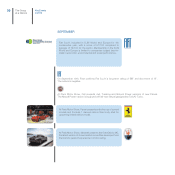 31
31 -
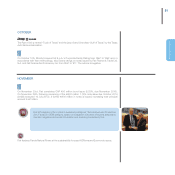 32
32 -
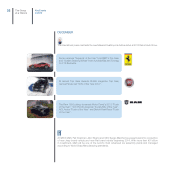 33
33 -
 34
34 -
 35
35 -
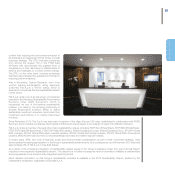 36
36 -
 37
37 -
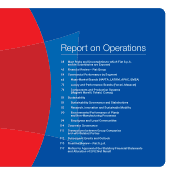 38
38 -
 39
39 -
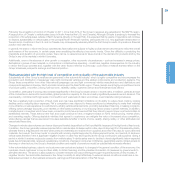 40
40 -
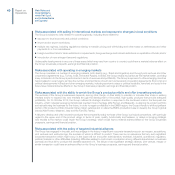 41
41 -
 42
42 -
 43
43 -
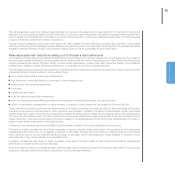 44
44 -
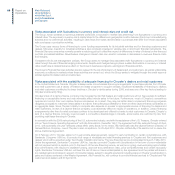 45
45 -
 46
46 -
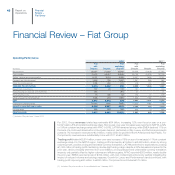 47
47 -
 48
48 -
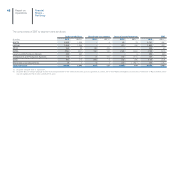 49
49 -
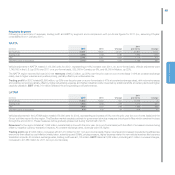 50
50 -
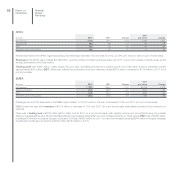 51
51 -
 52
52 -
 53
53 -
 54
54 -
 55
55 -
 56
56 -
 57
57 -
 58
58 -
 59
59 -
 60
60 -
 61
61 -
 62
62 -
 63
63 -
 64
64 -
 65
65 -
 66
66 -
 67
67 -
 68
68 -
 69
69 -
 70
70 -
 71
71 -
 72
72 -
 73
73 -
 74
74 -
 75
75 -
 76
76 -
 77
77 -
 78
78 -
 79
79 -
 80
80 -
 81
81 -
 82
82 -
 83
83 -
 84
84 -
 85
85 -
 86
86 -
 87
87 -
 88
88 -
 89
89 -
 90
90 -
 91
91 -
 92
92 -
 93
93 -
 94
94 -
 95
95 -
 96
96 -
 97
97 -
 98
98 -
 99
99 -
 100
100 -
 101
101 -
 102
102 -
 103
103 -
 104
104 -
 105
105 -
 106
106 -
 107
107 -
 108
108 -
 109
109 -
 110
110 -
 111
111 -
 112
112 -
 113
113 -
 114
114 -
 115
115 -
 116
116 -
 117
117 -
 118
118 -
 119
119 -
 120
120 -
 121
121 -
 122
122 -
 123
123 -
 124
124 -
 125
125 -
 126
126 -
 127
127 -
 128
128 -
 129
129 -
 130
130 -
 131
131 -
 132
132 -
 133
133 -
 134
134 -
 135
135 -
 136
136 -
 137
137 -
 138
138 -
 139
139 -
 140
140 -
 141
141 -
 142
142 -
 143
143 -
 144
144 -
 145
145 -
 146
146 -
 147
147 -
 148
148 -
 149
149 -
 150
150 -
 151
151 -
 152
152 -
 153
153 -
 154
154 -
 155
155 -
 156
156 -
 157
157 -
 158
158 -
 159
159 -
 160
160 -
 161
161 -
 162
162 -
 163
163 -
 164
164 -
 165
165 -
 166
166 -
 167
167 -
 168
168 -
 169
169 -
 170
170 -
 171
171 -
 172
172 -
 173
173 -
 174
174 -
 175
175 -
 176
176 -
 177
177 -
 178
178 -
 179
179 -
 180
180 -
 181
181 -
 182
182 -
 183
183 -
 184
184 -
 185
185 -
 186
186 -
 187
187 -
 188
188 -
 189
189 -
 190
190 -
 191
191 -
 192
192 -
 193
193 -
 194
194 -
 195
195 -
 196
196 -
 197
197 -
 198
198 -
 199
199 -
 200
200 -
 201
201 -
 202
202 -
 203
203 -
 204
204 -
 205
205 -
 206
206 -
 207
207 -
 208
208 -
 209
209 -
 210
210 -
 211
211 -
 212
212 -
 213
213 -
 214
214 -
 215
215 -
 216
216 -
 217
217 -
 218
218 -
 219
219 -
 220
220 -
 221
221 -
 222
222 -
 223
223 -
 224
224 -
 225
225 -
 226
226 -
 227
227 -
 228
228 -
 229
229 -
 230
230 -
 231
231 -
 232
232 -
 233
233 -
 234
234 -
 235
235 -
 236
236 -
 237
237 -
 238
238 -
 239
239 -
 240
240 -
 241
241 -
 242
242 -
 243
243 -
 244
244 -
 245
245 -
 246
246 -
 247
247 -
 248
248 -
 249
249 -
 250
250 -
 251
251 -
 252
252 -
 253
253 -
 254
254 -
 255
255 -
 256
256 -
 257
257 -
 258
258 -
 259
259 -
 260
260 -
 261
261 -
 262
262 -
 263
263 -
 264
264 -
 265
265 -
 266
266 -
 267
267 -
 268
268 -
 269
269 -
 270
270 -
 271
271 -
 272
272 -
 273
273 -
 274
274 -
 275
275 -
 276
276 -
 277
277 -
 278
278 -
 279
279 -
 280
280 -
 281
281 -
 282
282 -
 283
283 -
 284
284 -
 285
285 -
 286
286 -
 287
287 -
 288
288 -
 289
289 -
 290
290 -
 291
291 -
 292
292 -
 293
293 -
 294
294 -
 295
295 -
 296
296 -
 297
297 -
 298
298 -
 299
299 -
 300
300 -
 301
301 -
 302
302 -
 303
303 -
 304
304 -
 305
305 -
 306
306 -
 307
307 -
 308
308 -
 309
309 -
 310
310 -
 311
311 -
 312
312 -
 313
313 -
 314
314 -
 315
315 -
 316
316 -
 317
317 -
 318
318 -
 319
319 -
 320
320 -
 321
321 -
 322
322 -
 323
323 -
 324
324 -
 325
325 -
 326
326 -
 327
327 -
 328
328 -
 329
329 -
 330
330 -
 331
331 -
 332
332 -
 333
333 -
 334
334 -
 335
335 -
 336
336 -
 337
337 -
 338
338 -
 339
339 -
 340
340 -
 341
341 -
 342
342 -
 343
343 -
 344
344 -
 345
345 -
 346
346
 |
 |

40
Risks associated with selling in international markets and exposure to changes in local conditions
The Group is subject to risks inherent to operating globally, including those related to:
exposure to local economic and political conditions;
import and/or export restrictions;
multiple tax regimes, including regulations relating to transfer pricing and withholding and other taxes on remittances and other
payments to or from subsidiaries;
foreign investment and/or trade restrictions or requirements, foreign exchange controls and restrictions on repatriation of funds; and/or
introduction of more stringent laws and regulations.
Unfavorable developments in any one of these areas (which may vary from country to country) could have a material adverse effect on
the Group’s business prospects, earnings and financial position.
Risks associated with operating in emerging markets
The Group operates in a number of emerging markets, both directly (e.g., Brazil and Argentina) and through joint ventures and other
cooperation agreements (e.g., Turkey, India, China and Russia). In Brazil, the Group retains its position as the market leader, providing
a key contribution to the Group’s performance in terms of revenues and profitability. The Group’s exposure to other emerging countries
has increased in recent years, as have the number and importance of such joint ventures and cooperation agreements. Economic and
political developments in Brazil and other emerging markets, including economic crises or political instability, have had and could in the
future have material adverse effects on the Group’s business prospects, earnings and financial position.
Risks associated with the ability to enrich the Group’s product portfolio and offer innovative products
The success of the Group’s businesses depends, among other things, on their ability to maintain or increase their share in existing
markets and/or to expand into new markets through the development of innovative, high-quality products that provide adequate
profitability. On 30 October 2012, the Group outlined its strategic direction in response to the continued crisis in the European car
industry, which includes leveraging its historical premium brand heritage (Alfa Romeo and Maserati), re-aligning its product portfolio
and repositioning the business for the future. In order to regain profitability in the EMEA region, the Group intends to shift a significant
portion of its product portfolio towards higher margin vehicles and to utilize the EMEA production base to develop the Group’s global
brands (Alfa Romeo, Maserati, Jeep and the Fiat 500 Family).
A failure to develop and offer innovative products that compare favorably to those of the Group’s principal competitors, with particular
regard to the upper-end of the product range, in terms of price, quality, functionality and features, or delays in bringing strategic
new models to the market, could impair the Group’s strategy, which would have a material adverse effect on the Group’s business
prospects, earnings and financial position.
Risks associated with the policy of targeted industrial alliances
The Group has engaged in the past, and may engage in the future, in significant corporate transactions such as mergers, acquisitions,
joint ventures and restructurings, the success of which is difficult to predict. There can be no assurance that any such significant
corporate transaction which might occur in the future will not encounter administrative, technical, industrial, operational, regulatory,
political, financial or other difficulties (including difficulties related to control and coordination among different shareholders or business
partners) and thus fail to produce the benefits expected of it. The failure of any significant strategic alliance, joint venture, merger or
similar transaction could have an adverse effect on the Group’s business prospects, earnings and financial position.
Main Risks and
Uncertainties to
which Fiat S.p.A.
and its Subsidiaries
are Exposed
Report on
Operations
